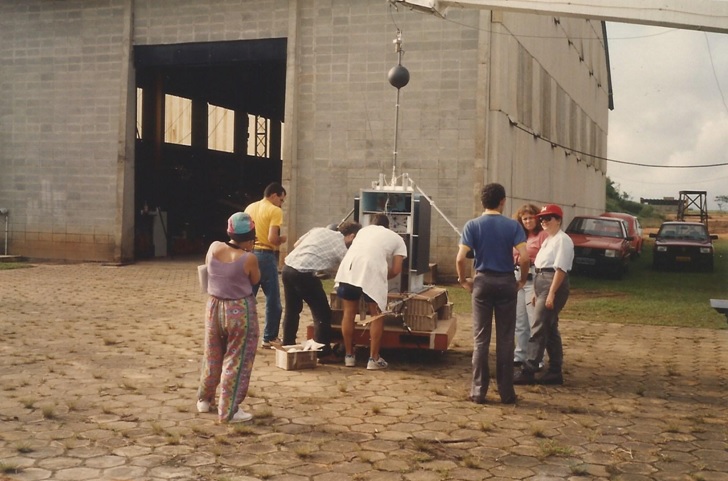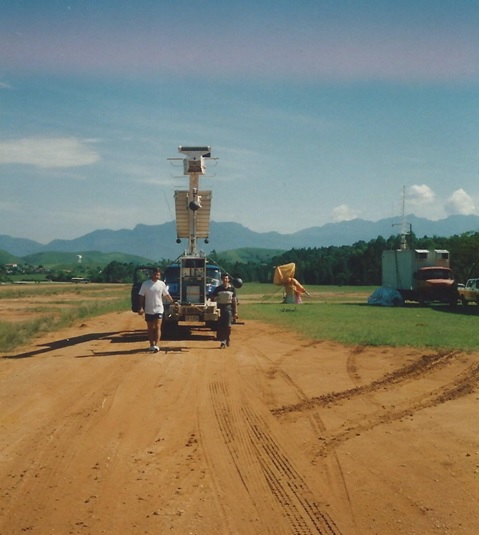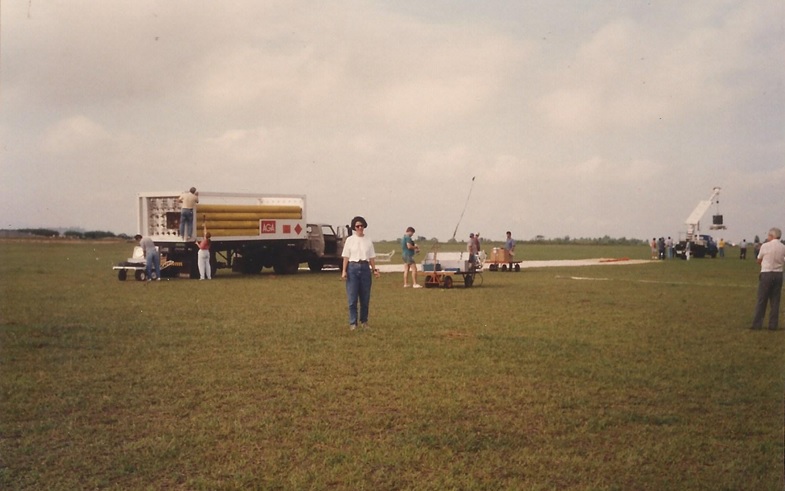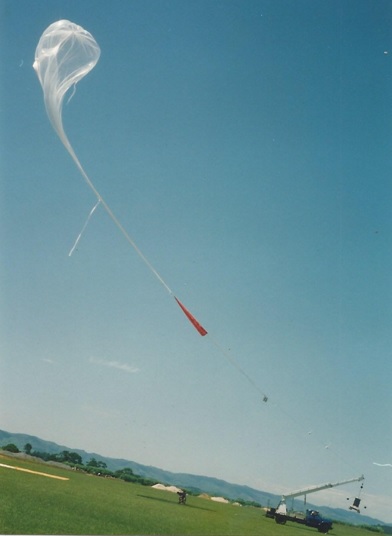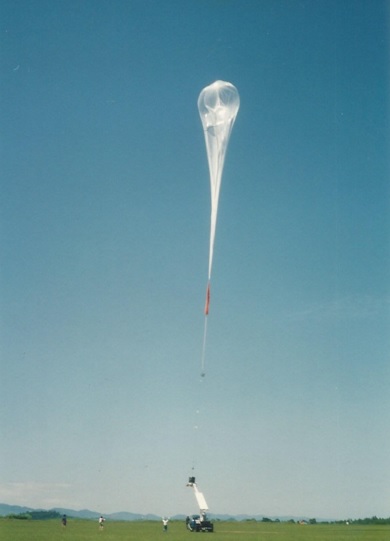Purpose of the flight and payload description
The instrument was flown in a stratospheric balloon under a coordinated campaign to study the stratospheric conductivity in Brazil with data supported by radar and Meteosat satellite images.
The measurements were obtained, each 10 min and for the first time, positive and negative conductivity vertical profiles were obtained in the country.
During the flight, at an average altitude of 27.5 km, the balloon passed over two thunderclouds as identified by onboard video images and photographs, as well as by radar data.
The simultaneous conductivity measurements and thundercloud observations allowed to determine that the presence of clouds affects the stratospheric negative conductivity, producing an extended and cumulative drop after the balloon passed over each cloud.
The positive conductivity, in turn, was found to be predominantly influenced by the photoelectric effect.
Details of the balloon flight
Balloon launched on: 1/26/1994 at 7:20 local
Launch site: Balloon Launch Sector, Cachoeira Paulista, Brazil
Balloon launched by: Setor de Lancamento de Baloes (SLB) / Instituto Nacional de Pesquisas Espaciais (INPE)
Balloon manufacturer/size/composition: Zero Pressure Balloon
End of flight (L for landing time, W for last contact, otherwise termination time): 1/26/1994 at ~ 16:00 local
Balloon flight duration (F: time at float only, otherwise total flight time in d:days / h:hours or m:minutes - ): 8 hr 20 m
The balloon was launched on January 26, 1994, at 0720 LT from Cachoeira Paulista, Brazil.
After a initial ascent phase the balloon reached the ceiling altitude of 29.2 km in 1 hour and 20 min and then floated for about 7 hours.
No additional data are available about the flight.
External references
- Estudo de condutividade, campo elétrico e rel�mpagos associados a nuvens de tempestade Thesis by Marcelo Magalhães Fares Saba
- Stratospheric balloon measurements of electric fields associated with thunderstorms and lightning in Brazil J. Geophys. Res., 105(D14), 18091
- Stratospheric balloon measurements of sferics in brazil Congresso Internacional da Sociedade Brasileira de Geofísica, 1997
- Stratospheric conductivity measurements in Brazil Journal of Geophysical Research: Atmospheres Volume 104, Issue D22, p 27203
286If you consider this website interesting or useful, you can help me to keep it up and running with a small donation to cover the operational costs. Just the equivalent of the price of a cup of coffee helps a lot.

